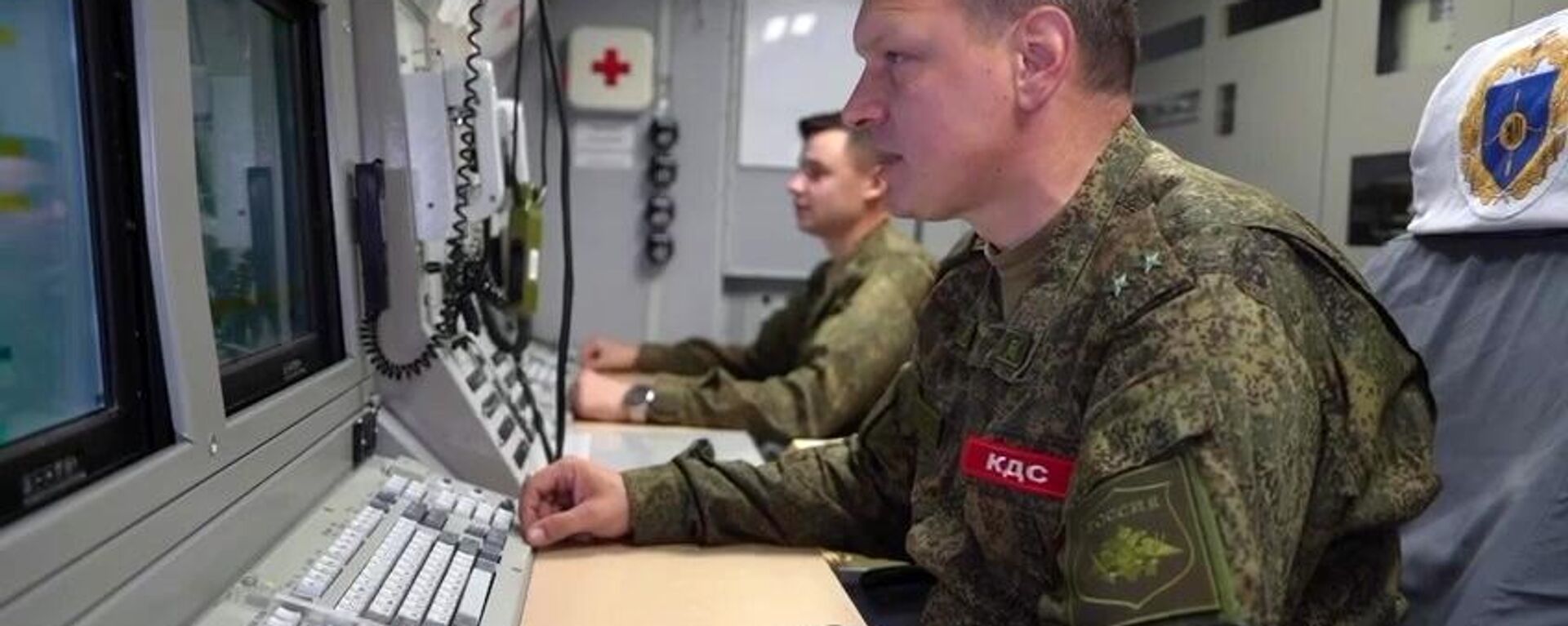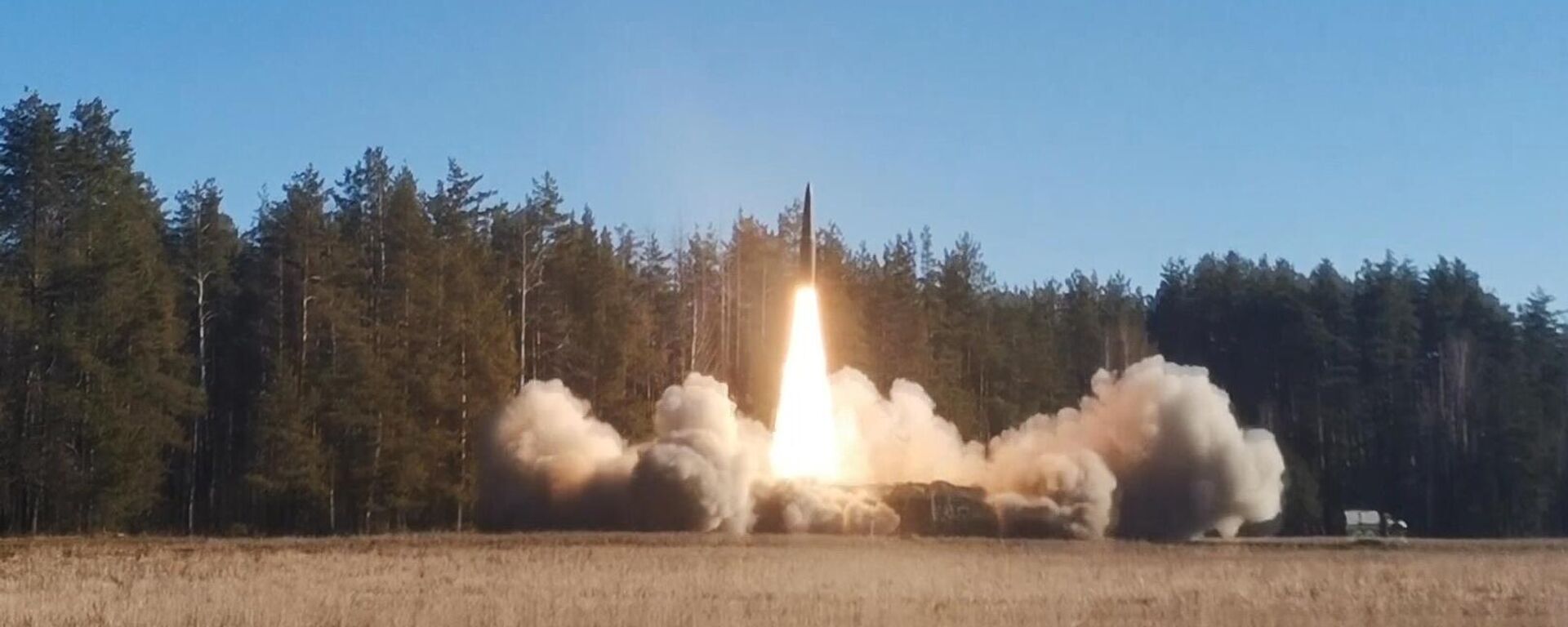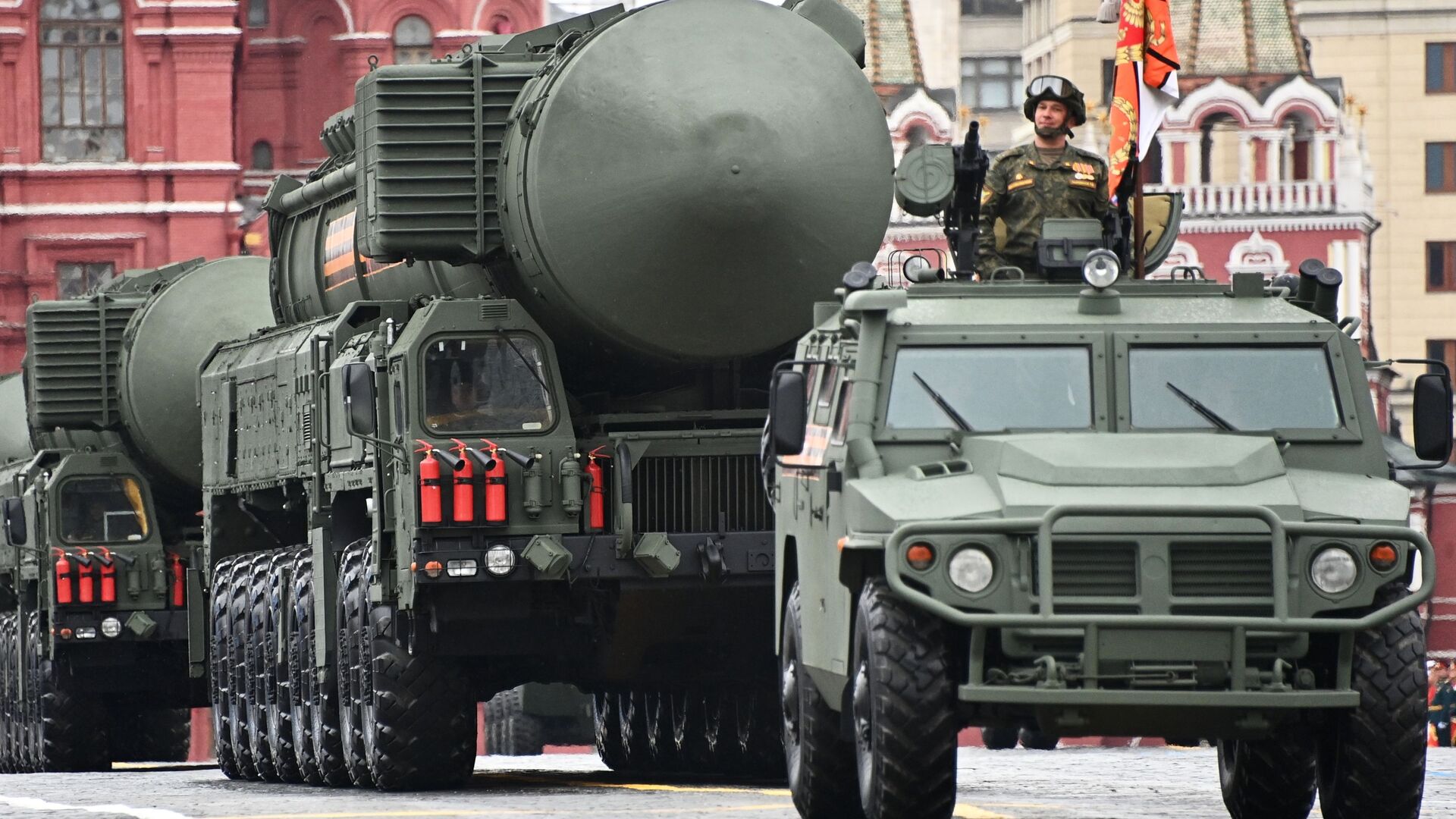https://sputnikglobe.com/20241123/how-russias-icbm-design-school-laid-the-groundwork-for-the-oreshnik-hypersonic-ballistic-missile-1120980603.html
How Russia’s ICBM Design School Laid the Groundwork for the Oreshnik Hypersonic Ballistic Missile
How Russia’s ICBM Design School Laid the Groundwork for the Oreshnik Hypersonic Ballistic Missile
Sputnik International
Russian rocket scientists created the new Oreshnik intermediate-range ground-based hypersonic ballistic missile from scratch, five years after the US unilaterally terminated the Intermediate-Range Nuclear Forces Treaty restricting such weapons. Sputnik asked a retired Russian Air Defense Forces colonel and missile expert how this became possible.
2024-11-23T17:18+0000
2024-11-23T17:18+0000
2024-11-30T16:12+0000
military & intelligence
russia
russian air defense forces
russia's new oreshnik ballistic missile
analysis
https://cdn1.img.sputnikglobe.com/img/07e5/05/09/1082839147_0:160:3073:1888_1920x0_80_0_0_0f3c12febe62383590936ac50c64d948.jpg
Russia's president provided new information about the Oreshnik missile system at a meeting with defense and military industry officials on Friday, saying the weapon's mass production has been approved, and that Russia already has a stockpile of such weapons.The Oreshnik is a fundamentally new weapon, not just a modernization of an older system, President Putin said. In addition, he noted, "several systems" like the Oreshnik "are currently in development for further testing in Russia today...That is, we are developing a whole lineup of medium and shorter-range systems."Tested in combat in Dnepropetrovsk region against a major Ukrainian defense-related enterprise on Thursday, the Oreshnik is modern Russia's first-ever intermediate-range ground based ballistic missile, with previous weapons in this class developed by the Soviet Union, and scrapped between 1988-1991 in accordance with the terms of the Intermediate-Range Nuclear Forces Treaty, signed at the twilight of the Cold War.Washington unilaterally pulled out of the INF Treaty in 2019 and immediately set to work on the development of new US medium and intermediate-range ballistic missile designs, but this work has yet to bear fruit, with systems like the Dark Eagle Long-Range Hypersonic Weapon facing delays thanks to repeated test failures, with combat deployment plans put off repeatedly.“That is, it’s not a smaller version of the Yars, or a Yars missing one stage, but the development of the scientific and technical reserve, those technologies which our design bureaus and industry have today,” Khodarenok explained.Intermediate-range ballistic missiles like the Oreshnik “are in great demand” today, Khodarenok emphasized, particularly for a transcontinental power like Russia, amid US plans to deploy new ground-based missiles in Europe and Asia.“For the US, possessing this class of weapons is not a matter of life and death, since they’re separated [from their main adversaries] by oceans,” the retired officer said.Russia is "traditionally strong" when it comes to the creation of new strategic missiles, Khodarenok said, "because whereas the enemy at one time focused on the creation of strategic aviation and naval weaponry, one of the strong points of our design bureaus and the defense complex was always strategic ballistic missiles.”The observer pointed, for example, to the pioneering work of rocket scientist and former Moscow Institute of Thermal Technology head Yuri Solomonov, whose design team has been responsible for or involved in the creation of almost all of Russia’s modern strategic systems, including the Yars, Topol-M, Bulava and Sarmat, as well as hypersonics.Oreshnik’s Cousins: What Will They Look Like?The observer can imagine a smaller, cheaper Oreshnik variant with a 1,500-2,000 km firing range, for example, or missiles equipped with their own maneuverable hypersonic glide vehicles.“We will find out about it only after the missile has been used in combat, because at the development and testing stage, all possible measures are taken to prevent leaks about weapons’ characteristics. And in general, the greatest effect from a new weapon is achieved with its sudden, unexpected and massive use,” Khodarenok said.Factors That Make Russia's Missiles UnstoppableThere are four basic elements which combine to make Russia's strategic missile systems essentially impervious to even the most modern air and missile defense systems, Khodarenok says, among them their incredible speed, and ability to be armed with maneuvering hypersonic gliders.“Because the speed of approach of warheads and anti-missile missiles is extremely high – seven km per second or more (accounting for both the warhead and interceptor), a human operator in principle cannot control the process of gunnery," Khodarenok said. "Everything happens automatically and by and large, firing is controlled by a digital computing complex.”“Plus there are electronic warfare systems operating in the terminal stage, as well as dummy warheads. In such conditions, shooting simply becomes unrealistic,” Khodarenok summed up.
https://sputnikglobe.com/20241122/why-us-and-its-nato-allies-cant-intercept-russias-oreshnik-missiles-1120966598.html
https://sputnikglobe.com/20231217/watch-russian-forces-employ-yars-icbms-in-military-exercise-1115650398.html
https://sputnikglobe.com/20241122/pepe-escobar-oreshnik---the-3-km-per-second-plot-twist-1120965738.html
https://sputnikglobe.com/20241111/russian-hypersonic-developments-still-unattainable-for-west---kurchatov-institute-head-1120848120.html
russia
Sputnik International
feedback@sputniknews.com
+74956456601
MIA „Rossiya Segodnya“
2024
News
en_EN
Sputnik International
feedback@sputniknews.com
+74956456601
MIA „Rossiya Segodnya“
Sputnik International
feedback@sputniknews.com
+74956456601
MIA „Rossiya Segodnya“
how did russia develop oreshnik missile, is russia's oreshnik missile good, what's behind russia's oreshnik missile, who made russia's oreshnik missile, how far can russia's oreshnik missile fly
how did russia develop oreshnik missile, is russia's oreshnik missile good, what's behind russia's oreshnik missile, who made russia's oreshnik missile, how far can russia's oreshnik missile fly
How Russia’s ICBM Design School Laid the Groundwork for the Oreshnik Hypersonic Ballistic Missile
17:18 GMT 23.11.2024 (Updated: 16:12 GMT 30.11.2024) Russian rocket scientists created the new Oreshnik intermediate-range ground-based hypersonic ballistic missile from scratch, five years after the US unilaterally terminated the Intermediate-Range Nuclear Forces Treaty restricting such weapons. Sputnik asked a retired Russian Air Defense Forces colonel and missile expert how this became possible.
Russia's president
provided new information about the Oreshnik missile system at a meeting with defense and military industry officials on Friday, saying the weapon's mass production has been approved, and that Russia already has a stockpile of such weapons.
The Oreshnik is a fundamentally new weapon, not just a modernization of an older system, President Putin said. In addition, he noted, "several systems" like the Oreshnik "are currently in development for further testing in Russia today...That is, we are developing a whole lineup of medium and shorter-range systems."
Tested in combat in Dnepropetrovsk region against a major Ukrainian defense-related enterprise on Thursday, the Oreshnik is modern Russia's first-ever intermediate-range ground based ballistic missile, with previous weapons in this class developed by the Soviet Union, and scrapped between 1988-1991 in accordance with the
terms of the Intermediate-Range Nuclear Forces Treaty, signed at the twilight of the Cold War.
Washington unilaterally pulled out of the
INF Treaty in 2019 and immediately set to work on the development of new US medium and intermediate-range ballistic missile designs, but this work has yet to bear fruit, with systems like the Dark Eagle Long-Range Hypersonic Weapon facing delays thanks to
repeated test failures, with combat deployment plans put off repeatedly.

22 November 2024, 17:00 GMT
“We have a very large scientific and technical reserve for the development of intercontinental ballistic missiles, with the Yars ICBM for example. In principle, achieving a similar result with the Oreshnik with such a reserve is possible in fairly short order. The Oreshnik, I think, is a creative evolution of ideas embedded in the Yars,” retired Russian Air Defense Forces colonel and missile expert Mikhail Khodarenok told Sputnik, commenting on the speed with which the new Russian missile was developed, and its successful combat testing.
“That is, it’s not a smaller version of the Yars, or a Yars missing one stage, but the development of the scientific and technical reserve, those technologies which our design bureaus and industry have today,” Khodarenok explained.
Intermediate-range ballistic missiles like the Oreshnik “are in great demand” today, Khodarenok emphasized, particularly for a transcontinental power like Russia, amid US plans to deploy new ground-based missiles in Europe and Asia.
“For the US, possessing this class of weapons is not a matter of life and death, since they’re separated [from their main adversaries] by oceans,” the retired officer said.
Russia is "traditionally strong" when it comes to the creation of new strategic missiles, Khodarenok said, "because whereas the enemy at one time focused on the creation of strategic aviation and naval weaponry, one of the
strong points of our design bureaus and the defense complex was always strategic ballistic missiles.”
The observer pointed, for example, to the pioneering work of rocket scientist and former Moscow Institute of Thermal Technology head Yuri Solomonov, whose design team has been responsible for or involved in the creation of almost all of Russia’s modern strategic systems, including the Yars, Topol-M, Bulava and Sarmat, as well as hypersonics.

17 December 2023, 22:03 GMT
Oreshnik’s Cousins: What Will They Look Like?
Commenting on the news that Russia is testing several Oreshnik-type systems, Khodarenok said that while it can only be speculated how these systems will look, in all likelihood “they will have different ranges, payload characteristics, guidance systems, systems for combating enemy anti-missile defenses, systems for jamming enemy radar.”
The observer can imagine a smaller, cheaper Oreshnik variant with a 1,500-2,000 km firing range, for example, or missiles equipped with their own maneuverable hypersonic glide vehicles.
“We will find out about it only after the missile has been used in combat, because at the development and testing stage, all possible measures are taken to prevent leaks about weapons’ characteristics. And in general, the greatest effect from a new weapon is achieved with its sudden, unexpected and massive use,” Khodarenok said.

22 November 2024, 15:59 GMT
Factors That Make Russia's Missiles Unstoppable
There are four basic elements which combine to make Russia's strategic missile systems essentially impervious to even the most modern air and missile defense systems, Khodarenok says, among them their incredible speed, and ability to be armed with maneuvering hypersonic gliders.
“Because the speed of approach of warheads and anti-missile missiles is extremely high – seven km per second or more (accounting for both the warhead and interceptor), a human operator in principle cannot control the process of gunnery," Khodarenok said. "Everything happens automatically and by and large, firing is controlled by a digital computing complex.”
“If a warhead is approaching at hypersonic speed, but also maneuvering along the trajectory,” intercepting it becomes extremely difficult, the observer noted, emphasizing that after the interceptor makes its trajectory calculations, “but the warhead starts completely unpredictable maneuvers…all guidance is disrupted and the possibility of hitting the warhead is reduced to zero.”
“Plus there are electronic warfare systems operating in the terminal stage, as well as dummy warheads. In such conditions, shooting simply becomes unrealistic,” Khodarenok summed up.

11 November 2024, 04:58 GMT






